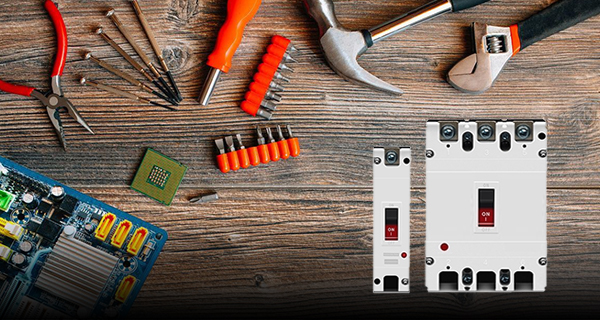How to Maintain DC Circuit Breaker?
DC circuit breakers play a crucial role in ensuring the safety and reliability of electrical systems. Regular maintenance is essential to keep them in optimal condition, preventing potential malfunctions and ensuring efficient performance. DC circuit breaker has the advantages of current limiting and arc extinguishing ability. In order to make the main circuit breaker in good working condition, it is necessary to strengthen the maintenance management. In this article, ATO automation will discuss the maintenance considerations of DC circuit breakers.

- Visual Inspection. The first step in maintaining a DC circuit breaker is conducting a thorough visual inspection. Examine the breaker for any signs of physical damage, corrosion, or loose connections. Ensure that there are no foreign objects or debris that could interfere with its operation. This visual inspection provides a baseline assessment of the breaker's overall condition.
- Tighten Electrical Connections. Loose electrical connections can lead to overheating and potential failure of a DC circuit breaker. Regularly check and tighten all terminal connections, ensuring they are secure and free from corrosion. This step is crucial in maintaining proper conductivity and preventing resistance that may compromise the breaker's performance.
- Lubrication of Moving Parts. DC circuit breakers contain moving parts that require proper lubrication to function smoothly. Apply the recommended lubricant to moving components such as hinges and levers. This helps reduce friction, prolongs the lifespan of the breaker, and ensures reliable operation during switching events.
- Verify Operating Mechanism. Test the operating mechanism of the DC circuit breaker to ensure it operates correctly. Check for any unusual sounds, vibrations, or delays in the opening and closing actions. If abnormalities are detected, further investigation and potential repairs may be necessary to address the issues promptly.
- Inspect Arc Chutes. Arc chutes are essential components in a DC circuit breaker that extinguish the arc produced during the interruption of a circuit. Inspect the arc chutes for any signs of wear, damage, or contamination. Clean or replace them as needed to maintain optimal arc extinguishing capabilities and prevent degradation of the breaker's performance.
- Check Insulation Resistance. Assess the insulation resistance of the DC circuit breaker using a megohmmeter. Low insulation resistance can lead to electrical leakage and compromise the integrity of the breaker. Regular testing helps identify potential issues early on, allowing for timely corrective measures.
- Conduct Routine Electrical Testing. Perform routine electrical tests to verify the breaker's performance characteristics, including its trip settings and response times. Use specialized testing equipment to ensure that the DC circuit breaker meets specified standards and is capable of interrupting the circuit safely.
Regular maintenance of electrical circuit breakers is essential to guarantee the safety and reliability of electrical systems. By following these key steps, including visual inspection, tightening electrical connections, lubrication, verifying the operating mechanism, inspecting arc chutes, checking insulation resistance, and conducting routine electrical testing, you can help prevent potential issues and extend the lifespan of your DC circuit breaker. Remember to adhere to manufacturer guidelines and seek professional assistance for any complex maintenance tasks to ensure the continued optimal performance of your electrical infrastructure.

